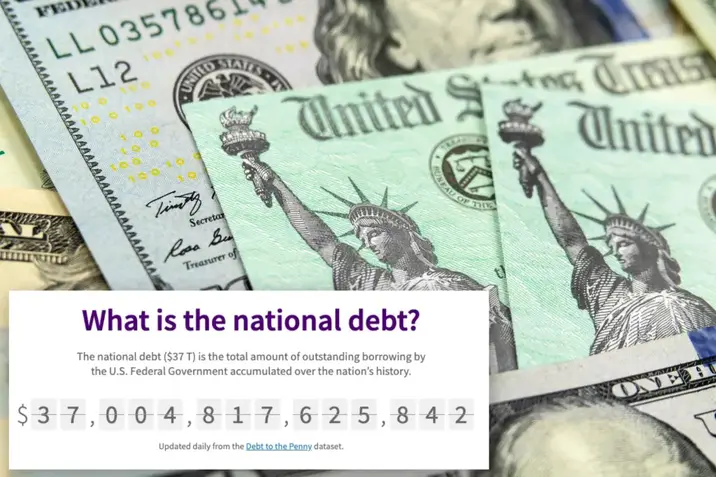T4K3.news
Debt milestone hits 37 trillion
U.S. debt climbs to a record 37 trillion, fueling policy debate over spending and taxes.

The debt surpassed 37 trillion in a Treasury update, underscoring faster borrowing and growing pressure on policy decisions.
US debt reaches 37 trillion as spending accelerates
The Treasury Department’s latest data show the gross national debt has topped 37 trillion, a record level that highlights the pace of borrowing. The update logs daily balances and confirms that the debt rose faster than pre pandemic projections, helped by continued government spending and relief programs. It also notes a new law expanding tax cuts and spending, which the Congressional Budget Office says will add about 4.1 trillion to the debt over the next decade.
Rising debt is expected to have real effects on the economy. The Government Accountability Office links higher debt to higher borrowing costs for mortgages and cars, and it warns that private investment could slow as government borrowing competes for capital. The pace of increase, researchers say, matters for families and businesses, and it places new pressure on policymakers to chart a sustainable path forward.
Key Takeaways
"Debt crowds out important priorities"
Michael Peterson of the Peterson Foundation on debt impact
"We are adding a trillion more to the national debt every 5 months"
Peterson Foundation on debt growth pace
"Borrowing puts upward pressure on interest rates"
Peterson's observation on the cost of debt
"Hopefully policymakers wake up to the reality that action is needed now"
Maya MacGuineas on policy urgency
The numbers reveal a long-term shift in how the government uses debt as a tool for stabilization and growth. Yet the same data point to a widening policy gap between urgent relief measures and long-term fiscal discipline. If debt continues to climb at this rate, the space for future fiscal maneuvers could shrink just when it is most needed. Policymakers face a choice between sustaining recovery in the short term and restoring fiscal credibility for the long term, a balance that will test both parties.
Highlights
- Debt crowds out important priorities
- We are adding a trillion more to the national debt every 5 months
- Borrowing puts upward pressure on interest rates
- Hopefully policymakers wake up to the reality that action is needed now
Budget and political sensitivity risk
Rising national debt tied to policy changes makes the topic politically sensitive and prone to backlash from taxpayers, investors, and lawmakers. The piece could become a focal point in budget fights.
How lawmakers respond in the coming months will show whether debt becomes a catalyst for reform or a trigger for risk.
Enjoyed this? Let your friends know!
Related News

Debt milestone reached

Debt tops 37 trillion as policy bets hinge on growth

US debt climbs past 37 trillion

US budget deficit rises despite tariff revenue

Ray Dalio warns economic stability threatened by rising national debt

Alonso ties Mets record with 252nd homer

Stocks Retreat as Investors Await Key Technology Earnings

Jamie Dimon warns about private credit risks
